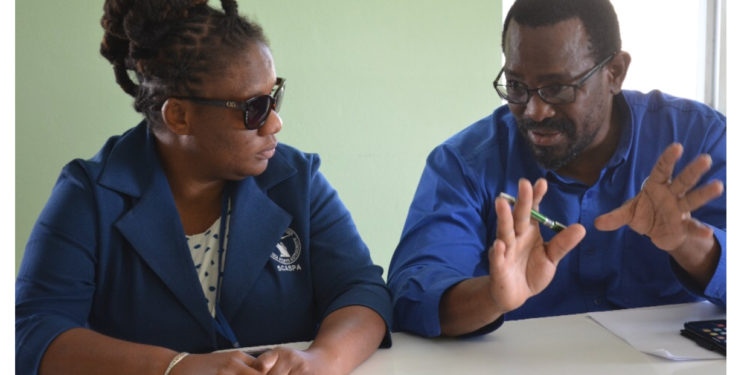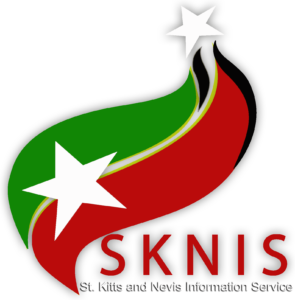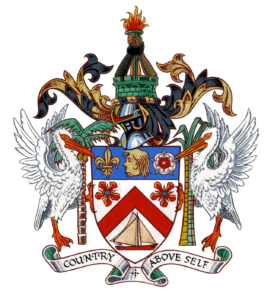Public and private sector agencies and businesses within District # 1 joined other localities in the Caribbean through participation in a tsunami response exercise held today, March 15, 2018. The purpose of the annual exercise is to evaluate local tsunami response plans, increase tsunami preparedness, and improve coordination throughout the region. (District #1 covers the area from the S.E. Peninsula to Victoria Road, East.)
Mrs. Claricia Langley-Stevens, Deputy National Disaster Coordinator and National Disaster Coordinator (Acting) pointed to the impact of global earthquakes and triggered Tsunamis on Disaster Management (DM) practitioners in the Caribbean over the past few years, as the definitive basis for developed or improved Tsunami response policies and protocols.
“This important exercise allows the national disaster office to test current procedures of NGO’s and Public Service providers within an extremely vulnerable area, as it relates to the Earthquake and Tsunami hazards,” she said, “and the effort will be monitored and evaluated by a group of Observers, who will inform on the operational strengths and weaknesses or each participant, going forward.”
Langley-Stevens says that this in turn, will allow NEMA to make credible recommendations on improving or creating Disaster Management Plans for every department or agency.
“Our goal is to facilitate the inclusion of a Disaster Plan as part of the Standard Operating Procedures of every business, every community and every household, by the end of 2018,” she said.
How does today’s event fit into NEMA’s goal to outfit all communities with comprehensive response plans? The CARIBE WAVE 18 exercise has a mandate to simulate a widespread Tsunami Warning and Watch situation throughout the Caribbean, which requires the implementation of local tsunami response plans.
“After an exhaustive needs analysis conducted in the designated test area,” according to Exercise Director, Supt. Lyndon David, “We determined that the exercise would not include public notification, in order to have a comprehensive sense of what currently exists in the business plans of operators in the area.”
Supt. David heads the Police Telecomms Department, which is the focal point for Tsunami alerts in St. Kitts-Nevis.
The Disaster Management fraternity was tested according to what is referred to as The Barbados Scenario. This setting simulated a major earthquake of magnitude 8.6, located at 12.20°N -58.30°W and subsequent tsunami along a 400 km by 100 km wide fault, directed towards the southern Atlantic Ocean. Alerts and messaging were received from the Pacific Tsunami Warning Center (PTWC) during the exercise, which is the Regional Tsunami Service Provider for the countries in the Caribbean Sea and Adjacent Regions.
Caribe Wave participants included: The Chamber of Industry and Commerce, Fire and Rescue Services, SCASPA, Customs and Excise Dept., Defence Force and Coast Guard, Craftshouse, Basseterre Fisheries, Sol EC Ltd., Lutron Liamuigua Ltd., Jaro Electronics and O.D. Brisbane, many of whom are operating without Disaster Management Plans or with inadequate response actions included in their plans. This is according to the Observers who were assigned to each participating entity.
“Echoing a message from one CEO among the group of participants,” Mrs. Langley-Stevens said in her presentation to the Observers, “NEMA has it’s work cut out for it.”
The DNDC alluded to NEMA’s two and a half year CDM Campaign focusing on the Tsunami threat and response, which has targeted communities, churches, businesses and the public sector, as the key to Tsunami Readiness Capacity within the Federation.
“Is it that NEMA is not getting the message to the people, or as you would have observed, the people are not taking the messages seriously?” She asked the Observers, in the Post Mortem, held at the Civil Aviation Office in Bird Rock.
Based on the goals of the test, many of the participants failed, according to the majority of Observers. The exercise tested Evacuation Procedures, Traffic Control, Response times, Alerting Mechanisms and the knowledge and understanding of Tsunami Protocols of St. Kitts Nevis of participants
While some employees exited their work places upon alert from NEMA, it was observed that some lacked a sense of urgency, some did not know what to do once they left the premises and some others expressed concerns about their own safety while on the job making recommendations, to the Observers.
In her closing remarks, the DNDC declared the exercise successful as far as initiating an assessment of the vulnerability of Users of the C.A. Paul Southwell Industrial Site.
“What our assessments have shown us is that businesses and departments located within the Industrial Park, would be in serious trouble if we were to be impacted by a Tsunami today or tomorrow. So now the real work begins, as we attempt, once again, to influence residents to create a Comprehensive Disaster Management Plan that speaks intelligibly to their susceptibility, to specific hazards.”
The DNDC said that NEMA is always available to assist in the development of a Disaster Plan, for any private or public sector entity. She also commended the Chamber of Industry and Commerce for their commitment and collaboration throughout the entire exercise, on behalf of their members.
The exercise was sponsored by the UNESCO/IOC Intergovernmental Coordination Group for Tsunami and Other Coastal Hazards Warning System for the Caribbean and Adjacent Regions (ICG/CARIBE-EWS), the Caribbean Emergency Management Agency (CDEMA), the Centro de Coordinación para la Prevención de los Desastres Naturales en América Central (CEPREDENAC), and the U.S. National Oceanic and Atmospheric Administration (NOAA).










